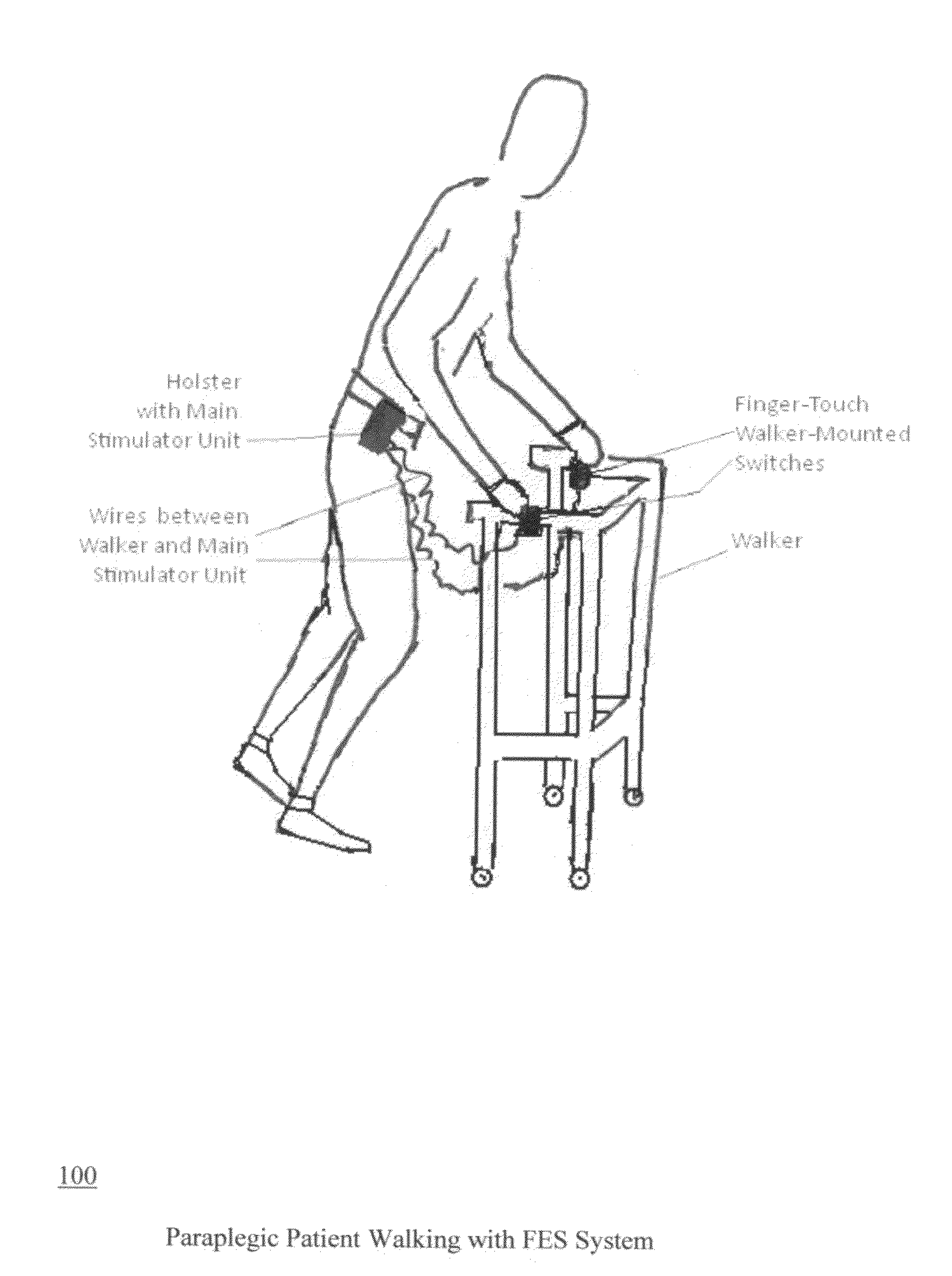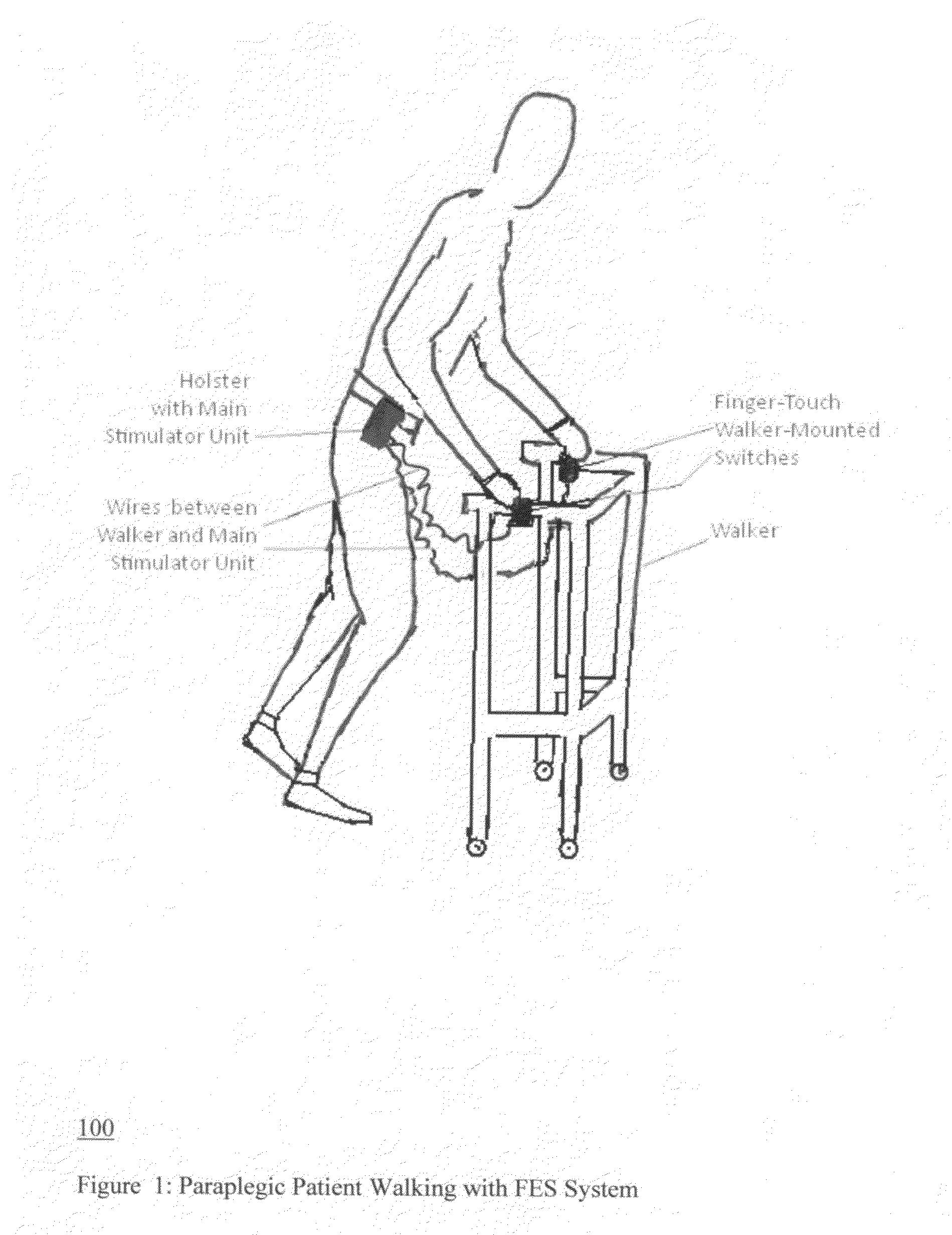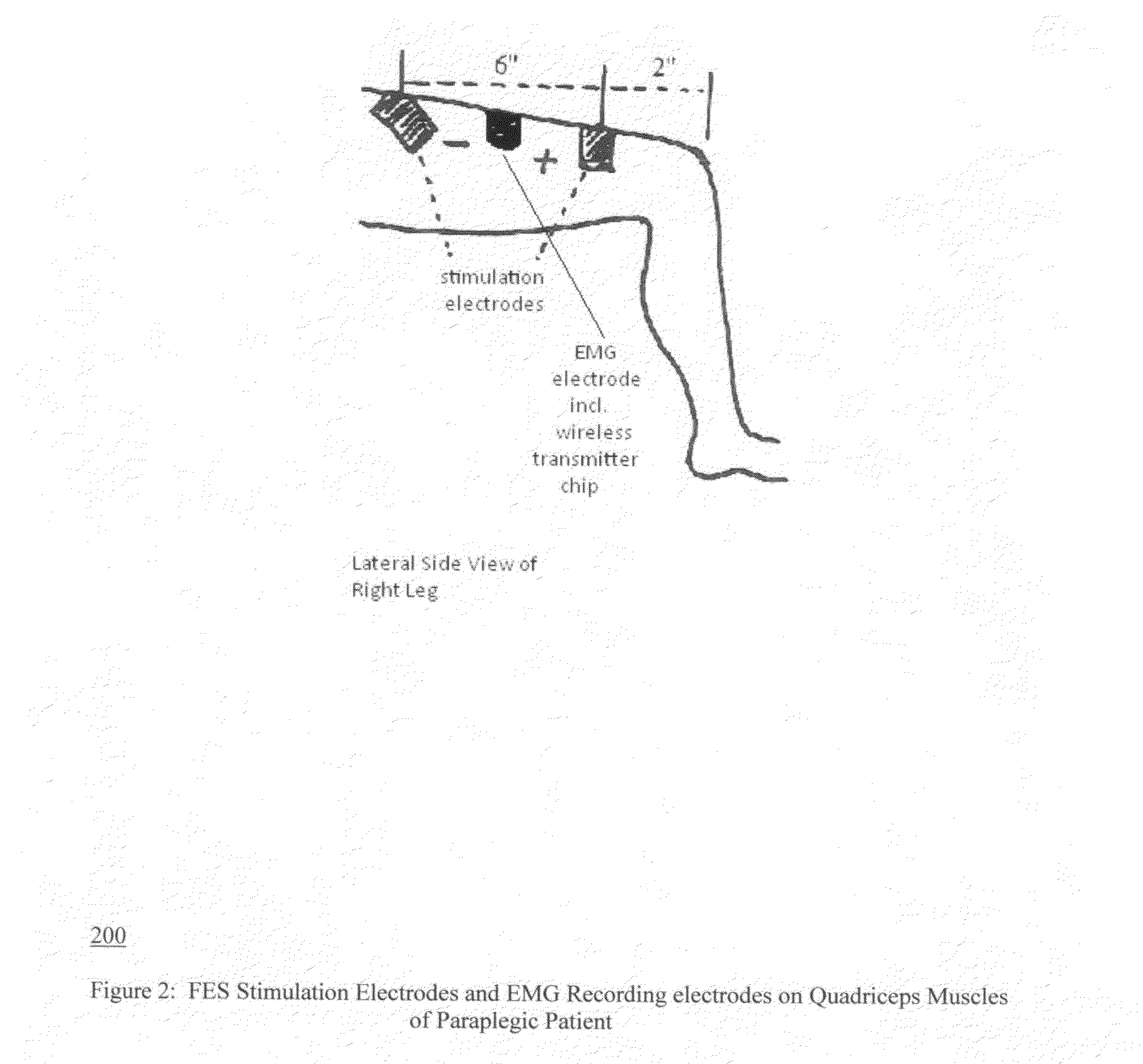Noninvasive electrical stimulation system for standing and walking by paraplegic patients
a non-invasive, patient-friendly technology, applied in the field of functional electrical stimulation, can solve the problem that the high voltage level of the stimulus pulse is beyond the control of a wireless transmitter, and achieve the effect of reducing the effect of the stimulus puls
- Summary
- Abstract
- Description
- Claims
- Application Information
AI Technical Summary
Benefits of technology
Problems solved by technology
Method used
Image
Examples
Embodiment Construction
[0019]This invention is of an improved noninvasive functional electrical stimulation (FES) method and device to provide closed-loop control of the stimulation in order to enhance patient independence and to simplify the operation of the system by a paralyzed patient during standing and walking with FES, as in FIG. 1 [00015]
[0020]The closed loop control is established via placing noninvasive EMG (electromyographic) electrodes on the surface of the skin above the muscles which undergo FES, as in the example shown in FIG. 2 [0016]
[0021]A preferred realization of the FES system but without the EMG electrodes assembly (which includes a wireless transmitter) and without the stimulation electrodes is as in FIG. 3 [0017].
[0022]FIG. 4 [0018] describes the closed-loop structure and operation of the system in further detail, as follows:
[0023]The stimulation controller (C) as in block 401 is the brains of the FES system. It incorporates a signal processing (SP) sub-unit the feedback signals 402...
PUM
 Login to View More
Login to View More Abstract
Description
Claims
Application Information
 Login to View More
Login to View More - R&D
- Intellectual Property
- Life Sciences
- Materials
- Tech Scout
- Unparalleled Data Quality
- Higher Quality Content
- 60% Fewer Hallucinations
Browse by: Latest US Patents, China's latest patents, Technical Efficacy Thesaurus, Application Domain, Technology Topic, Popular Technical Reports.
© 2025 PatSnap. All rights reserved.Legal|Privacy policy|Modern Slavery Act Transparency Statement|Sitemap|About US| Contact US: help@patsnap.com



